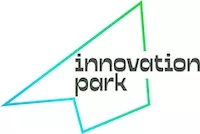As industries across the board grapple with rising costs, supply-chain issues, and economic uncertainty, sustainability goals have taken a back seat.
Or have they?
In today's post-pandemic reality, companies are realizing that innovative solutions are the only way to weather ever-increasing inflation.
It's not business as usual.
Companies must strike a balance between passing costs onto consumers and preserving operating margins. But how?
Efficiency efforts are changing the game.
Check out the following trends demonstrating the importance of sustainability amid inflation. Before we get into it, though, let's take a quick look at inflation.
INFLATION IN NUMBERS
US inflation rose from 1.4% in January 2021 to a record high of 9.1% in 2022. The European Union's rate reached 7.8% in March 2022, while the UK hit a 30-year high of 7% in the same month.
While CEOs deal with supply chain bottlenecks, shortages of raw materials, and ballooning input costs, consumers remain wary.
The average cost of living worldwide has increased more in the previous 18 months (since 2021's first quarter) than it did in the preceding five years combined. According to the International Monetary Fund, food and energy are the primary drivers behind this inflation.
Since 2021, average inflationary contributions from food alone surpassed overall median inflation from 2016 to 2020. This means food inflation has affected global living standards at the same detrimental rate as inflation for all consumption in the five-year period before the pandemic.
Energy costs paint a similar picture both directly and indirectly through rising transportation costs. Prices are rising in other categories too, but the average rate varies across countries.
Nonetheless, global inflation continued to climb in July 2022, with energy-related numbers easing only slightly. Food rates only increased-consistent with the estimation that worldwide energy prices have been passed onto consumers quicker than increased wholesale food prices.
The IMF's latest World Economic Outlook projects inflation in emerging markets and developing economies to reach 9.5% and 6.6% in advanced economies. Central banks have already hiked up interest rates, a trend likely to stick in 2023.
Today's economic climate is the result of certain trends, including:
- Robust demand growth post-pandemic, as global industrial activity rebounded
- Supply chain bottlenecks resulting in limited availability of products and materials, in turn driving cost volatility.
- Other supply chain disruptions due to rising freight costs, China's ongoing lockdowns, and the Russia-Ukraine conflict.
4 INNOVATIVE TRENDS ADDRESSING INFLATION
As the above factors drive inflation up, industry players are required to act. Let's look at some emerging trends changing the game.
1. Balancing Strategic Pricing and Sustainability Efforts
After decades of limited cost volatility, rising inflation is a key issue among industry leaders worldwide. Various sectors, from financial services and healthcare to consumer product goods, manufacturing, and technology, are faced with a new challenge:
Negotiating price increases of such a magnitude.
Current tools and pricing strategies are inept in addressing the unprecedented scope and granularity required by today's volatile inflationary environment.
Moreover, the impact of individual cost drivers on prices often has limited transparency, further complicating price increase calculations.
So, how can companies offset inflation without jeopardizing revenues?
By balancing strategic pricing and preserving operating margins with improved efficiency and sustainability efforts.
Companies are investing in technology to make operations more efficient, cut costs, and weather the macroeconomic storm while building future resiliency.
During Tesla's Q1 earnings call, CEO Elon Musk outlined this concept, noting the key supply chain issue of sourcing refined lithium for batteries.
"We have long-term contracts with suppliers, but those long-term contracts will obviously run out, and then the year we'll start to see potentially significant cost increases."
Musk added that to account for higher costs, Tesla will be increasing the prices of electric automobiles.
"But the macro is sort of looking at the world as a whole and saying, okay, what does it take for Earth to transition to sustainable energy faster?"
This balancing act isn't limited to one sector, though.
2. Automation and Digital Tool Adoption
According to IBM's CEO Arvind Krishna, technology is a key component of managing the current economic climate:
"Harnessing the power of technologies such as hybrid cloud and AI remains essential as our clients face a number of strategic challenges and opportunities, whether it's competing for talent, supply chain issues, inflation, cybersecurity or geopolitical instability."
According to HFS Research's SaaS XXV 2022 Report, the top four emerging tech investments among 2,000 global enterprises include:
- Process mining and discovery
- Artificial intelligence
- Cybersecurity
- Process automation
The report also highlights the following trends:
- SaaS and cloud computing automation tools have replaced outsourced tasks like workflow management, project monitoring, and call center consulting in the past five years.
- The adoption of SaaS-driven tools is rising while the virtual workforce takes center stage with workflow automation, analytics, and artificial intelligence.
- Long-term SaaS customer satisfaction relies on business value creation.
Automation isn't just about digital transformation and enhanced efficiency. It can also help organizations achieve ESG (environmental, social, and governance) goals, which can't be ignored-even in the current economic landscape.
Encompassing AI, machine learning, and analytics, automated tools:
Offer a Data-Driven Approach
Process mining collects, manages, and puts data from a company's applications and processes into context. As such, companies can see where improvements can be made while keeping track of specific targets. Essentially, with automation, organizations can:
- Identify goals and metrics related to efficiency
- Pinpoint internal processes that can be streamlined with automation
- Tweak specific processes to support ESG goals while reducing costs
- Gather data and track overall progress
Accelerate ESG Goals, Reduce Costs, and Improve Value Creation
According to Mckinsey, a robust ESG plan can significantly reduce costs, leading to value creation. Research by the consulting firm also indicates that a substantial correlation between financial performance and resource efficiency exists.
From supply chain optimization and decreased energy usage (and consequent costs) to sophisticated data collection, automated tools give companies the opportunity to achieve sustainability objectives while reducing operational costs.
3. Supply Chain Transformation
Ongoing supply shortages and inflation will inevitably lead to shipping inefficacies and various production challenges, according to Gartner Inc. These aren't short-term challenges. As the demand for goods rises, supply isn't able to keep up.
Moreover, in a recent survey, 67% of respondents said social and environmental sustainability metrics are KPIs for supply chain leaders.
Resource conservation is a key mitigation effort, with organizations implementing strategies like:
- Employing circular economic models to ease primary consumption to separate raw materials from growth
- Preserving natural capital such as air, water, and soil by preserving biodiversity, etc. to supply chains don't deplete such resources faster than they can be regenerated
- Capitalizing on waste as a value-based asset by building strategic partnerships with waste innovators, suppliers, and contractors.
Inflation trends, particularly in commodities, are driving unprecedented demands for working capital optimization in both payables and receivables. Commodity flows are a significant factor, but global banks are committed to developing environmental and social aspects. As such, these flows have diminished access to capital.
Industry leaders predict this situation will drive ESG transformation of supply chains.
4. Changing Consumer Behavior
While sustainability efforts remain a top priority for many consumers, inflation concerns are changing the way people shop. And not necessarily for the worse. Here are some noteworthy trends:
- An increase in reselling apps and data from Google Search trends show that people are looking for ways to cut costs by buying and selling used items. It's not only a practical way to cut costs but also a greener option.
- According to GWI's report, The Consumer Dilemma: Sustainability in the US, more than one-fifth of US consumers feel brands (especially big names) have the most responsibility in driving sustainability efforts-regardless of inflation.
- According to Google, the search term "how to save energy" also peaked in 2022 as global consumers look for ways to cut costs on increasing energy prices. In Denmark, the search term "hour by hour electricity prices" was popular, while the term "how to save energy at home uk" saw a 550% uptick.
- Quantilope's 2022 Consumer Trends in Sustainability Report found that 79% of consumers make price-led decisions on food and beverage products. Still, 42% of German shoppers and one-third of UK shoppers consider themselves "waste warriors."
According to Denise Taschereau, CEO and co-founder of Fairware, accountability remains crucial, even amid inflation:
"Sustainability is no longer an option to drop when times are tough. It's fundamental to the way business is being done."
INFLATION: DRIVING SUSTAINABILITY
As corporations, governments, and consumers feel the inflationary pinch, sustainability represents some much-needed relief.
Active pricing management strategies are crucial, requiring careful consideration of specific cost-driving factors. Nonetheless, more and more organizations are realizing the importance of efficiency efforts.
From automation adoption to supply chain transformation, sustainability is about more than achieving ESG objectives.
As consumer behavior adapts to the "new normal," companies must also adapt. If you want to maximize your revenue with innovative solutions, contact us today to find out about wealth management solutions that suit your needs.
Sources: Statista, IMF, HFS Research, FT, GWI, Google, Qauntilope
The content of this article is intended to provide a general guide to the subject matter. Specialist advice should be sought about your specific circumstances.


